You’ve probably considered solar panels for your home but dismissed the idea due to high installation costs. What if you could cut those expenses nearly in half while gaining complete control over your system’s design? DIY solar installation isn’t just about saving money—it’s about understanding exactly how your energy independence works. Before you assume it’s too complex or risky, there are compelling reasons why taking the self-installation route might be your smartest move.
Understanding DIY Solar Panel Installation Basics
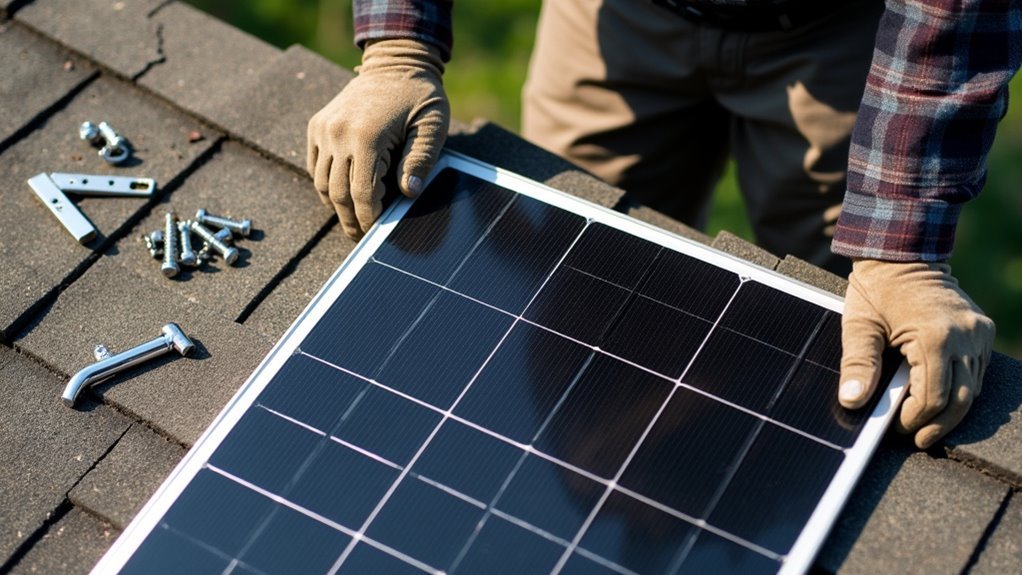
While professional solar installation services offer expertise and warranties, you can greatly reduce your solar investment by tackling the project yourself. DIY solar installation eliminates installer overhead and labor expenses, potentially saving you nearly 50% on total costs. For an average 8 kW solar energy system costing around $26,000, that’s considerable savings.
Pre-packaged home solar kit options make installation accessible even with minimal technical experience. These kits typically include essential components like panels, inverters, and charge controllers. However, success requires careful planning and component selection, as mistakes in panel orientation or sizing can noticeably impact performance.
Before starting, thoroughly research local regulations and building codes. Many areas require permits for solar installations, and compliance is vital to avoid fines while ensuring your cost of going solar remains ideal.
Significant Cost Savings Through Self-Installation
When you choose DIY solar installation, you’ll release the most substantial financial benefit available in home solar adoption. Self-installation eliminates nearly 50% of total project costs by cutting installer overhead and labor expenses.
| System Size | Professional Cost | DIY Cost |
|---|---|---|
| 6 kW | $19,500 | $9,750 |
| 8 kW | $26,000 | $13,000 |
| 10 kW | $32,500 | $16,250 |
| 12 kW | $39,000 | $19,500 |
| 15 kW | $48,750 | $24,375 |
DIY solar installations provide significant cost savings through wholesale component pricing and used panel options. You’ll gain complete control over your residential solar system design, ensuring it perfectly matches your energy needs while maximizing savings potential.
Complete Control Over Your Solar System Design
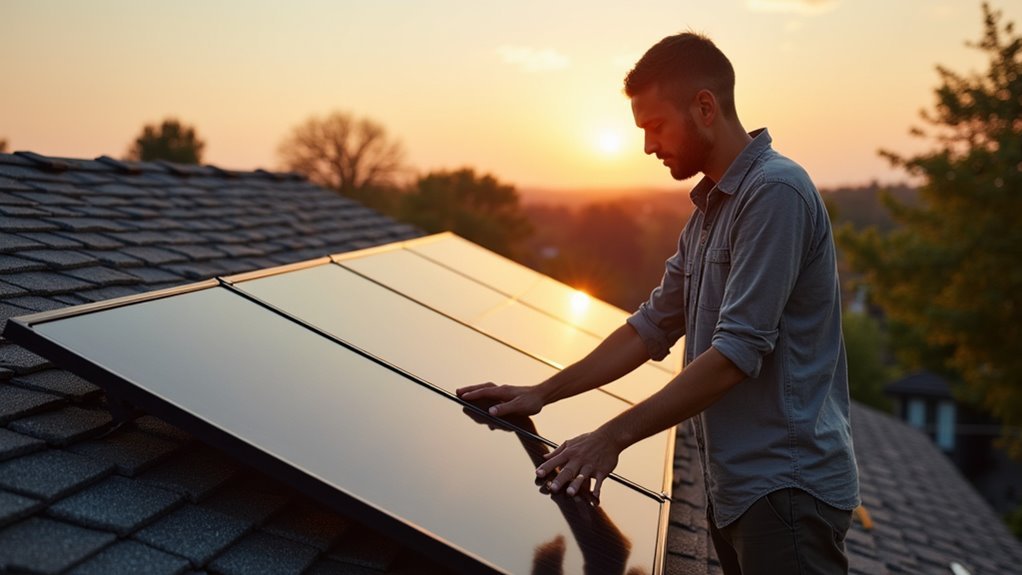
Beyond the financial advantages, DIY solar installation puts you in the driver’s seat of your energy future.
You’ll customize every aspect of your solar system design to match your specific energy needs and preferences. This complete ownership means you’re not limited to cookie-cutter solutions that professional installers typically offer.
You can select components that fit your budget perfectly, choosing between different panel types and inverters.
Want to experiment with solar tracking systems or off-grid configurations? You’re free to explore unique setups that enhance your home’s potential.
This hands-on approach develops your understanding of renewable energy technology, enabling you to maintain peak performance.
As technology evolves or your energy requirements change, you can easily upgrade components, keeping your system efficient and relevant.
Learning Valuable Solar Technology Skills
The journey of DIY solar installation transforms you into a skilled technician who understands the intricate workings of photovoltaic systems. You’ll master essential components like inverters, charge controllers, and battery storage while developing valuable electrical skills that benefit future projects.
| Technical Skills You’ll Master | Real-World Applications |
|---|---|
| Panel efficiency evaluation | Smart equipment purchasing decisions |
| Mounting system installation | Enhanced home improvement capabilities |
| Electrical troubleshooting | Confident system maintenance |
| Regulatory compliance understanding | Professional project management |
Learning solar technology through hands-on experience gives you deep insights into equipment selection, proper orientation, and tilt optimization. You’ll navigate local permitting processes, developing project management skills while ensuring safety compliance. This thorough understanding builds confidence in renewable energy systems, inspiring long-term commitment to sustainable living and advocacy.
Customizing Solutions for Your Specific Energy Needs
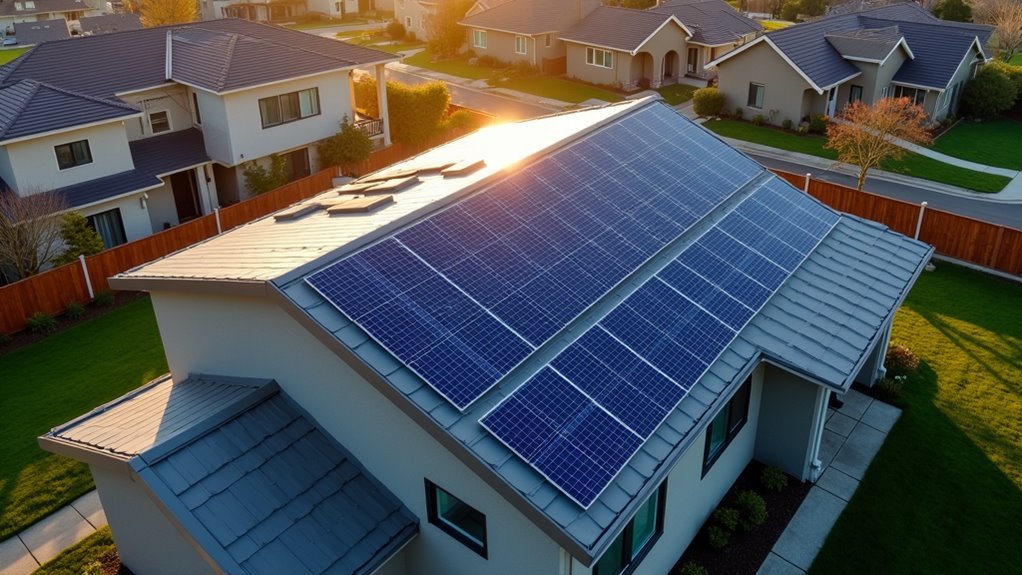
Armed with technical expertise from your DIY installation experience, you can now design a solar system that perfectly matches your home’s unique energy profile.
Customizing solar solutions means selecting the right number of panels—typically 13 for smaller homes and up to 44 for larger properties—based on your actual energy consumption needs.
Right-sizing your solar array with 13-44 panels ensures optimal energy production tailored to your home’s specific consumption patterns.
DIY solar projects give you complete control over component selection, from high-efficiency panels to battery storage systems.
You’ll assess your energy usage patterns to strategically position panels for maximum sunlight exposure, dramatically boosting production.
Choose between off-grid systems for complete utility independence or grid-tied configurations based on your preferences.
Personalizing the installation process allows flexible scheduling while ensuring your system design aligns perfectly with your unique energy requirements and goals.
Accessing Wholesale Pricing and Equipment Options
You can slash your solar installation costs by up to 50% when you access wholesale pricing instead of paying retail markups.
The equipment quality you’ll find through wholesale suppliers often matches or exceeds what traditional installers offer, giving you professional-grade components without the overhead costs.
Wholesale Price Benefits
When diving into DIY solar installation, accessing wholesale pricing becomes one of your most powerful cost-cutting strategies.
You’ll gain substantial savings that can cut your project costs nearly in half compared to retail prices.
Here’s how wholesale prices transform your DIY solar installation:
- Direct cost reduction – You’ll save up to 50% on solar equipment compared to retail pricing.
- Premium access – You’ll discover high-quality components unavailable to general consumers.
- Bulk discounts – You’ll receive additional savings when purchasing larger quantities.
- Nonprofit partnerships – You’ll find cooperative programs offering discounted equipment for residential projects.
These wholesale advantages let you customize solar systems with quality components while eliminating installer overhead costs, maximizing your investment return.
Equipment Quality Differences
Although wholesale pricing offers considerable savings, equipment quality differences present a complex challenge for DIY solar installers.
You’ll find that most reputable solar panel brands are exclusively sold through certified professional installers, limiting your access to premium components.
While DIY installation kits include necessary parts, they often compromise on equipment quality to meet retail price points.
This quality gap greatly impacts system performance and long-term reliability.
Professional installers leverage bulk purchasing power and wholesale relationships to source high-quality equipment that typically lasts over 20 years.
You might save upfront with DIY installation, but lower-grade components can reduce energy production and increase maintenance costs over time.
The superior equipment that professional installers access often delivers better efficiency and durability than retail alternatives available to DIYers.
Direct Supplier Access
While professional installers dominate access to premium equipment, savvy DIY solar enthusiasts can still tap into wholesale pricing through direct supplier relationships. This approach transforms your installation costs dramatically, offering substantial savings unavailable through traditional retail channels.
Direct supplier access opens four key advantages for your DIY solar project:
- Wholesale pricing that can reduce overall costs by nearly 50% compared to retail.
- Quality equipment unavailable to general consumers, enhancing system performance.
- Competitive pricing opportunities by comparing multiple supplier sources.
- Special discount programs through nonprofits and utility companies.
You’ll discover that building relationships with suppliers provides access to premium components while maintaining budget flexibility.
Shopping across local installers, online vendors, and specialty suppliers guarantees you’re securing the best value for your solar investment.
Safety Considerations and Risk Management
Before you climb onto your roof with solar panels in hand, you must understand that DIY solar installation carries serious safety risks that can endanger your life and property.
Electrical shock and fire hazards are real threats when you’re handling high-voltage components without proper training. You’ll also risk damaging your roof, creating leaks and structural problems that’ll cost thousands to repair.
Local regulations typically require professional certification for grid connections, and ignoring these rules can result in legal penalties.
Furthermore, improper installation will void your equipment warranties, leaving you financially exposed when components fail.
Don’t forget essential safety gear like harnesses and insulated gloves when working at heights with electrical systems. These precautions aren’t optional—they’re life-saving necessities.
Navigating Local Permits and Regulations
When you’re ready to install solar panels, you’ll need to navigate your local building codes and secure the proper permits before breaking ground.
Understanding these requirements isn’t optional—skipping this step can lead to fines, legal issues, and forced removal of your system.
You’ll want to research your municipality’s specific regulations and start the permit application process early, as timelines and requirements vary greatly by location.
Understanding Building Codes
One essential step you can’t skip involves researching your area’s building codes, which vary dramatically from city to city and can dictate everything from panel placement to structural requirements.
Understanding these regulations prevents costly mistakes and guarantees your installation meets safety standards.
Here’s what you need to take into account:
- Research local building codes thoroughly before beginning any work
- Obtain proper permits to avoid fines or system removal requirements
- Hire licensed professionals for installation to meet electrical and safety standards
- Check with your local utility company about interconnection agreements and grid connection requirements
Don’t underestimate the complexity of maneuvering through these requirements.
Many homeowners find that working with experienced solar installation experts streamlines the permitting process considerably, as they’re already familiar with local regulations and can guide you through approval procedures efficiently.
Permit Application Process
Submitting your permit application requires careful preparation of detailed documentation that demonstrates your solar installation meets all local safety and structural requirements.
You’ll need to provide extensive installation plans that include system specifications and structural integrity assessments to your local permitting office. The permit application process varies greatly by location, so research your area’s specific requirements thoroughly.
Many jurisdictions require a licensed electrician to review and sign off on your plans, ensuring compliance with electrical codes before work begins. Don’t skip this vital step – failing to obtain proper permits can result in hefty fines, forced removal of your system, or denial of grid connection.
Most local governments provide helpful guidance documents outlining their permit application process for solar installations.
Choosing the Right Components and Materials
Five critical components form the backbone of every residential solar system, and selecting the right ones can make or break your investment’s performance.
When choosing the right components for your DIY solar system, you’ll need to evaluate each element carefully to maximize efficiency and longevity.
Here’s what to prioritize:
- Solar panels with efficiency ratings between 15-22% to convert maximum sunlight into electricity.
- Inverters that match your system size – string inverters for basic setups or microinverters for individual panel optimization.
- Battery storage options favoring lithium-ion over lead-acid for superior cycle efficiency and lifespan.
- Mounting systems engineered to withstand local weather conditions while protecting your roof.
Always verify that your certified equipment meets local regulations and utility requirements for seamless permitting and grid connection.
Installation Process Step-by-Step Planning
Before you pick up your first solar panel, thorough planning guarantees your DIY installation runs smoothly and meets all safety requirements.
Start your installation process by creating a detailed installation plan that maps panel placement, electrical connections, and safety protocols. Research local permitting processes early, as regulations vary greatly by location and some areas require specific licenses.
Your DIY solar kit should include all essential components, but verify you have panels, inverters, mounting systems, and balance of system components before beginning.
Plan the ideal panel orientation and assess your roof’s structural integrity.
Finally, understand your utility’s requirements to connect to the grid, as improper connections can result in costly system rejection and delays.
Warranty and Insurance Coverage Implications
When you’re considering DIY solar installation, you’ll need to understand how this choice affects your warranty protection and insurance coverage.
Most manufacturers will void their warranties if you don’t use certified installers, leaving you financially exposed if equipment fails or has defects.
Your insurance company likely requires professional installation too, which means a DIY approach could eliminate coverage for damages, accidents, or liability issues.
Voided Warranty Risks
Although DIY solar installations might seem like a cost-effective approach, they’ll likely void your manufacturer’s warranty on panels and components, leaving you without protection if defects or failures occur.
When you choose DIY solar over professional installers, you’re accepting significant financial risk through voided warranty coverage:
- Lost manufacturer protection – Solar panels and equipment warranties become invalid without certified installation.
- Insurance coverage gaps – Many policies won’t cover DIY installations, leaving you exposed to liability.
- No labor warranties – Professional installers provide thorough coverage for both equipment and workmanship.
- Expensive out-of-pocket repairs – Without warranty protection, you’ll pay full price for any defects or system failures.
These voided warranty risks can quickly eliminate your initial savings, making DIY solar a potentially costly gamble.
Insurance Policy Requirements
Beyond manufacturer warranties, your homeowner’s insurance policy likely has strict requirements about solar installations that could leave you financially exposed.
Most insurance policies specifically require professional installation to maintain coverage for your solar system. If you install panels yourself, your insurer may deny liability claims related to property damage or injuries caused by your DIY work.
Without certified professionals handling the installation, you’re fundamentally operating outside your policy’s protection. This means if your solar panels cause roof damage, electrical fires, or someone gets hurt during installation, you could face significant out-of-pocket expenses.
Before attempting DIY installation, carefully review your insurance policy’s language about solar systems and installation requirements to understand potential coverage gaps.
Maintaining Your DIY Solar System
Since you’ve invested time and money into installing your DIY solar system, you’ll want to protect that investment through proper maintenance.
Regular upkeep guarantees peak performance and extends your system’s lifespan.
Here are four essential maintenance tasks:
- cleaning the panels regularly removes dirt and debris, potentially improving efficiency by up to 20%
- electrical connections should be inspected periodically for wear or corrosion to prevent energy losses and safety hazards
- inverters typically need replacement every 5-10 years, so track installation dates and budget for future costs
- solar monitoring apps or devices help you track performance and identify issues early
You’ll also need to understand local regulations regarding maintenance requirements, as some jurisdictions mandate specific inspection schedules for solar installations.
When to Consider Professional Assistance
While DIY solar installation can save money, you’ll need professional help when dealing with complex electrical work that involves high-voltage connections or intricate wiring configurations.
You should also consider hiring certified installers when your local building codes require professional certification for permits, as non-compliance can result in costly fines and safety violations.
Additionally, if warranty protection is important for your investment, professional installation typically provides extensive coverage that DIY setups can’t offer.
Complex Electrical Work
Although many homeowners can handle basic DIY projects around the house, solar panel installation involves complex electrical work that requires professional expertise.
You’re dealing with high-voltage systems where incorrect installation can cause electrocution or fires, making safety the top priority.
Professional installers bring advanced electrical knowledge that’s essential for:
- Properly sizing and orienting panels for maximum energy production
- Selecting appropriate inverters for your specific system requirements
- Managing the permitting process and local regulations efficiently
- Ensuring grid connection compliance for net metering eligibility
Most utilities won’t approve grid connection without certified professional sign-off, which means your DIY installation mightn’t qualify for net metering programs.
You’ll miss out on selling excess energy back to the grid.
Permit and Code Requirements
Beyond electrical complexity, managing permit and code requirements presents another significant hurdle that often necessitates professional assistance. Many local jurisdictions require permits for solar installations, and you’ll face fines or mandated system removal if you skip this step.
Professional installers know local building codes inside and out, ensuring compliance that DIY installers often miss, leading to expensive rework later. Your utility company might require certified professionals for grid connections, making DIY impossible for grid-tied systems.
Some states demand specific licensing, including electrician credentials, which complicates your DIY plans considerably. The permitting process itself can consume weeks of your time with complex paperwork and inspections.
Professional installers streamline this bureaucratic maze, preventing costly delays and ensuring your system meets all regulatory requirements from day one.
Warranty Protection Needs
Warranty protection becomes a major concern when you choose DIY solar installation, as most manufacturers void their warranties if you don’t use certified professionals. This leaves you responsible for all repair costs and eliminates essential financial protection.
Consider these warranty-related risks with DIY solar installations:
- Equipment warranties become void – Manufacturers won’t honor claims without certified installation.
- Labor coverage disappears – You’ll pay out-of-pocket for all repairs and maintenance.
- Net metering eligibility suffers – Utility companies often require professional installation for grid connection.
- Manufacturer incentives vanish – Special guarantees and rebates typically require certified installers.
Professional installers provide thorough warranties covering both equipment and labor.
Additionally, violating local permitting regulations during DIY installation can complicate future warranty claims, making professional assistance valuable for long-term protection.
Long-Term Performance and System Monitoring
When you invest in a home solar system, you’re making a commitment that’ll pay dividends for decades to come. Your solar panels will deliver exceptional long-term performance, typically maintaining around 80% efficiency even after 25 years of operation.
System monitoring becomes your key to maximizing returns. Modern inverters offer real-time tracking through smartphone apps, letting you watch your energy production daily. You’ll quickly spot issues like shading or equipment problems that could slash your output if ignored.
Modern solar monitoring apps transform homeowners into energy detectives, catching performance problems before they drain your investment returns.
Regular maintenance requires minimal effort but delivers substantial rewards. Simple tasks like cleaning panels and checking connections keep everything running smoothly.
Homeowners who actively monitor and maintain their systems achieve up to 20% greater energy production compared to those who neglect regular system checks.
Frequently Asked Questions
Is It Worth Installing Solar Panels Myself?
You’ll save around $7,000 on an 8kW system, but you’re risking voided warranties, safety hazards, and complex permitting challenges. Unless you’ve got advanced electrical skills, professional installation’s typically worth the extra cost.
What Is the 20% Rule for Solar Panels?
You shouldn’t exceed 20% of your home’s total energy consumption when sizing your solar installation. This rule prevents over-sizing, reduces unnecessary expenses, and guarantees you’re getting ideal efficiency and return on investment.
Why Is My Electric Bill so High if I Have Solar Panels?
Your electric bill’s still high because your solar system might be undersized, experiencing seasonal drops in production, or you’re not getting proper net metering credits for excess energy generated.
Is There a Downside to Having Solar?
You’ll face potential downsides including voided warranties, safety risks from improper installation, complex permitting challenges, reduced equipment quality, and minimal savings that maintenance costs and installation errors could easily offset.

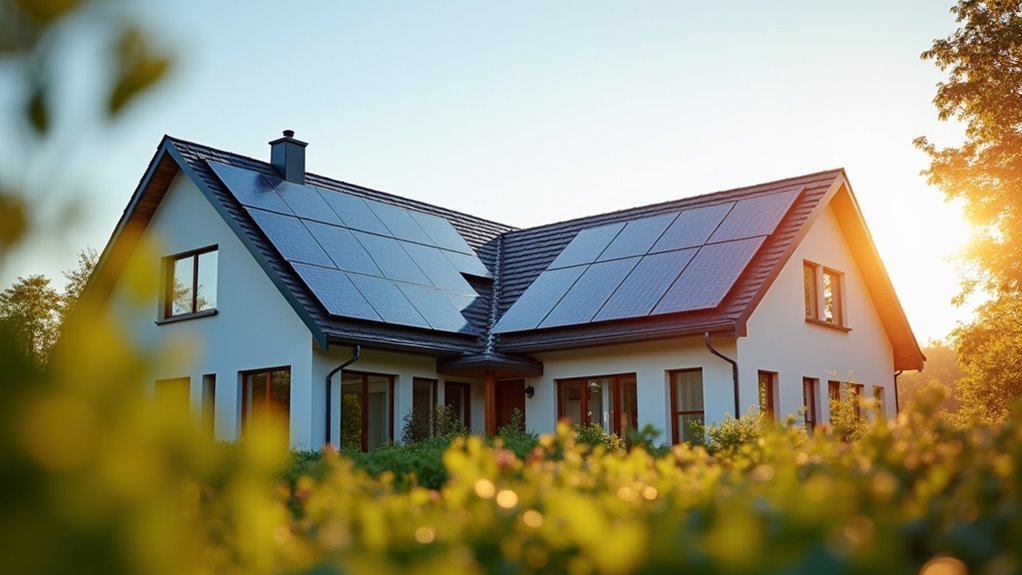
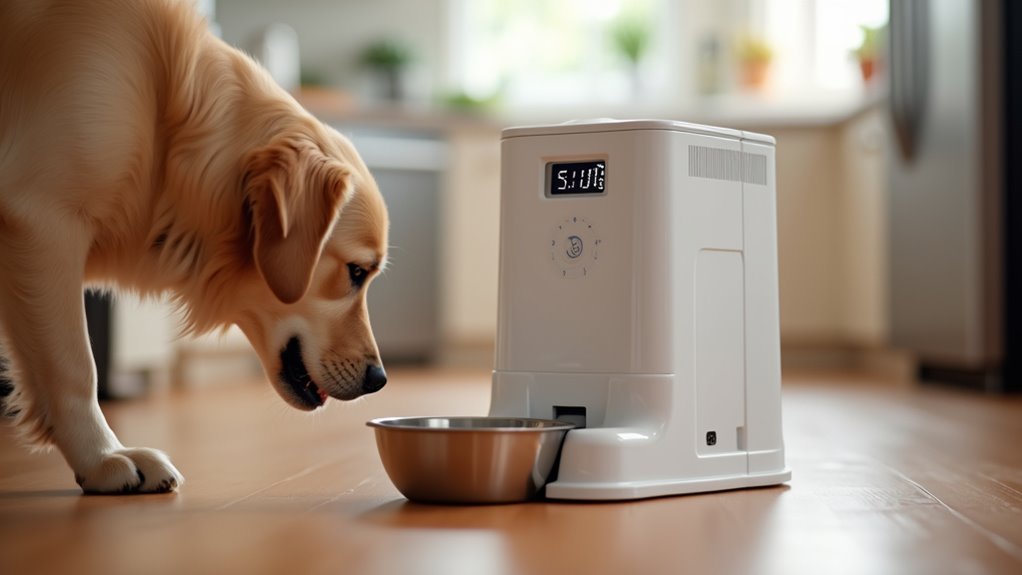


Leave a Reply